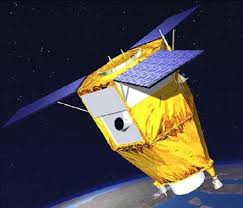
Moroccan press sources are reporting that the kingdom’s first high-resolution Earth observation satellite – currently designated as MN35-13 – is being readied for launch on an Arianespace Vega space launch vehicle from Kourou in French Guiana on November 7 or 8, 2017.
The MN35-13 satellite has been built by French-based companies Airbus Defence and Space, who built the bus, and Thales Alenia Space, who manufactured the imaging payload. A second Earth observation satellite for Morocco, and built by the same companies, is scheduled to be ready for launch in 2018.
The Moroccan Earth observation satellite programme has been shrouded in mystery, with a deal between Rabat and Airbus Defece and Space and Thales Alenia Space widely rumoured to have been inked as far back as 2015, but none of the parties officially involved made any public statement.
It is also believed by industry insiders that the two satellites are similar to the birds being developed by Airbus Defence and Space and Thales Alenia Space for the United Arab Emirates, known as Falcon Eye. Both pairs of satellites are thought to be upgraded versions of the Pléiades-HR Earth observation satellite that has a resolution of 70cm across a 20 kilometer swath, a storage capacity of 600GB and a downlink data rate of 450MB per second. The Pléiades-HR has an operational lifetime of approximately five years.
It is not known whether the Moroccan versions of the satellites have the same, if not better, payload capabilities, but the UAE Falcon Eye satellites are listed as sharing the Pléiades-HR features.

Morocco’s geographical position and national security situation provides justification for the two Earth observation satellites, as it is situated on the the northwest African coast of the Atlantic Ocean and the entrance to the Mediterranean Sea at the Strait of Gibraltar, a busy shipping and smuggling route. To the southwest of Morocco is the disputed territory of the Western Sahara, where Moroccan forces have frequently clashed with the Polisario Front. To Morocco’s east is Algeria, a large country that has a deep desert interior and that has continually been in conflict with Islamic extremists that have sought to overthrow the government.
Possessing the ability to autonomously monitor threats on land and at sea long before they manifest themselves as imminent dangers should provide Morocco with an improved security process and the more efficient use of scarce capabilities to deal with those threats.
Original published at: https://spacewatch.global/2017/09/moroccos-high-resolution-earth-observation-satellite-launched-arianespace-november-2017/
 SpaceWatch.Global An independent perspective on space
SpaceWatch.Global An independent perspective on space

